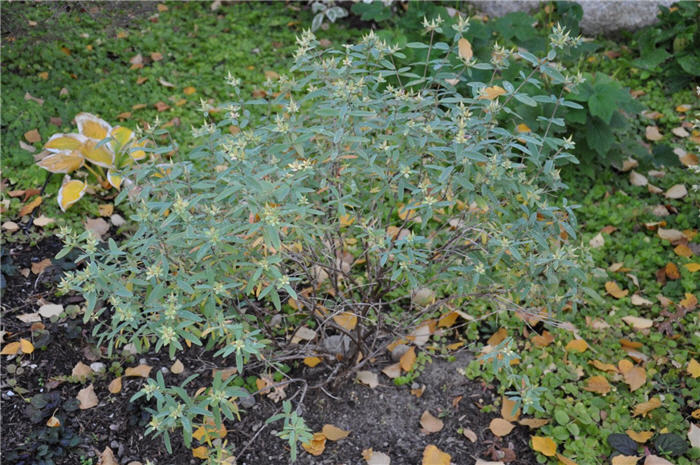| Botanical Name: Caryopteris x clandonensis 'Blue Mist' | |
| Common Name: Blue Mist Caryopteris |

-
Anatomy
-
Culture
-
Design
Plant Type
Shrub
Height Range
1-3'
Flower Color
Blue
Flower Season
Summer, Fall
Leaf Color
Grey Green
Bark Color
Brown, Grey
Fruit Color
n/a
Fruit Season
n/a
Sun
Full, Half
Water
Low, Medium
Growth Rate
Moderate
Soil Type
Sandy, Clay, Loam, Rocky, Unparticular
Soil Condition
Average, Rich, Poor, Well-drained, Dry
Soil pH
Neutral, Basic
Adverse Factors
Attracts Bees
Design Styles
English Cottage, Formal, Mediterranean, Ranch, Spanish
Accenting Features
Fragrance, Showy Flowers, Unusual Foliage
Seasonal Interest
Summer, Fall
Location Uses
Entry, Perennial Border, Shrub Border, Foundation, Patio, Raised Planter, Walls / Fences, Walkways
Special Uses
Cut Flowers, Hedge, Mass Planting, Small Spaces
Attracts Wildlife
Butterflies
Information by: Stephanie Duer
Photographer: wrong photo
Photographer: wrong photo
-
Description
-
Notes
'Blue Mist' is an attractive, compact, mounding cultivar of the species, growing about 2 to 3 feet tall and wide. It has powder blue, fragrant flowers that bloom July to September. Foliage is long, usually with toothed margins, or even deeply lobed, and is aromatic. Fall color is yellow. Use in the perennial, shrub, or foundation border. When planted with ornamental grasses, it makes for a nice, late summer vignette.
A nice addition to a sunny shrub or perennial border; also makes a nice hedge. Prefers full to part sun and well drained soil. Over-watering tends to make the plant rangy and may encourage lots of little seedlings. Wood often does not survive the winter, and so pruning back hard in late winter to early spring is recommended; it will also help to keep it tidy. Caryopteris is both deer and rabbit resistant. Attracts bees and butterflies. If over-watered, caryopteris may grow taller and be more sprawlish.